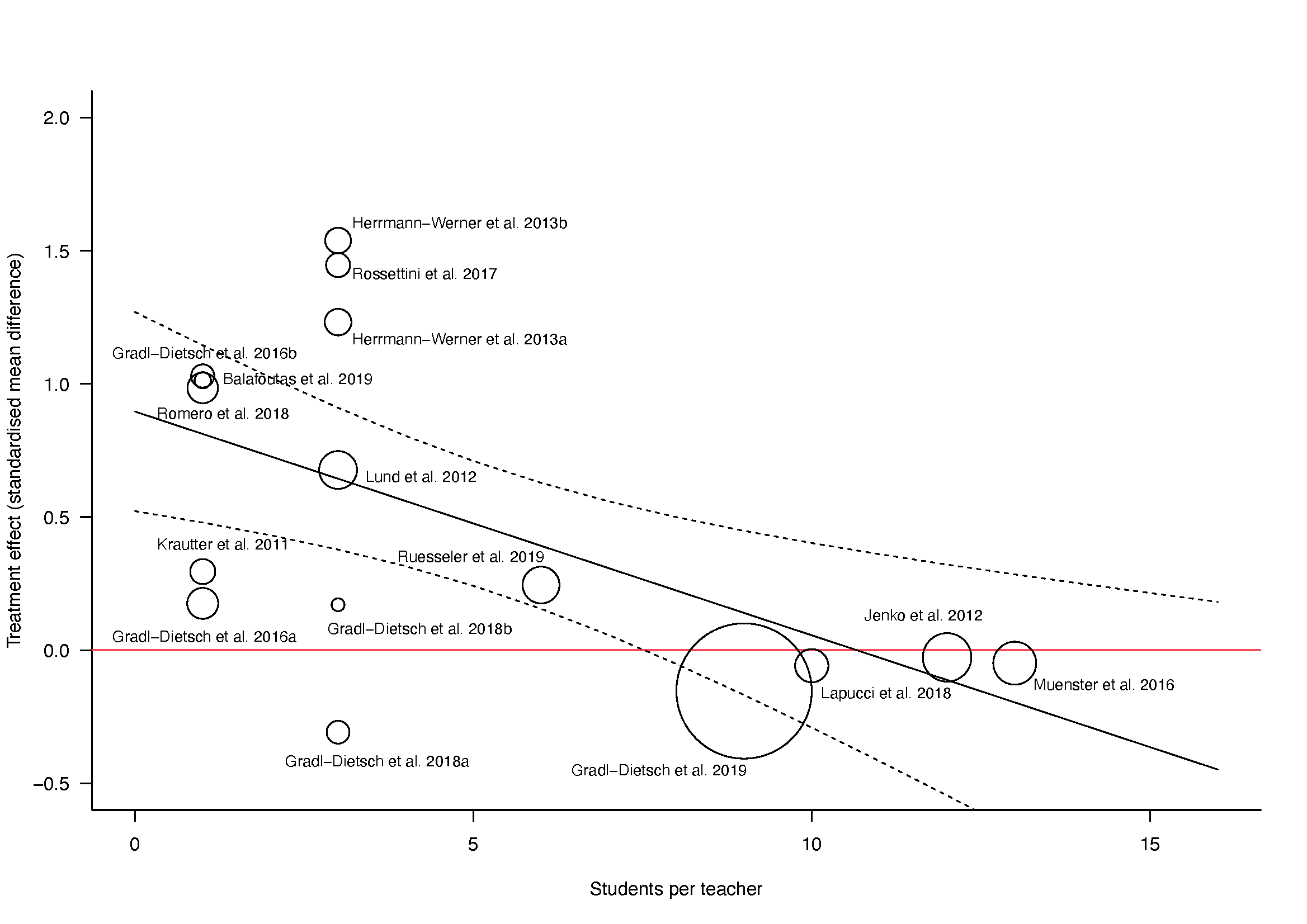
The effectiveness of the Peyton’s 4-step teaching approach on skill acquisition of procedures in health professions education: A systematic review and meta-analysis with integrated meta-regression
Abstract
Background: Acquisition of procedures is an important element in health professions education. Traditionally procedures are taught using a “see one - do one” approach. That is a teacher demonstrates and describes a procedure and afterwards the students practice the procedure. A more recent teaching approach for the acquisition of procedural skills was presented by Walker and Peyton. Peyton’s teaching approach is a stepwise teaching approach and consists of the following four steps: demonstration, deconstruction, comprehension and performance. The aims of this study were (i) to systematically evaluate the effectiveness of Peyton’s 4–step teaching approach on the acquisition of procedural skills in health professions education and (ii) to evaluate whether studies with fewer students per teacher showed a larger between group difference than studies with more students per teacher. Methods: We searched in Medline, PsycInfo, Embase and ERIC for eligible studies. Records were screened by two independent reviewers. A random effects meta-analysis was performed to evaluate skill acquisition and time needed to perform the procedures at post-acquisition and retention tests. A meta-regression was used to explore the effect of the number of students per teacher on the estimated effect of the educational interventions. Results: An effect size of 0.45 SMD (95% CI [0.15; 0.75]) at post-acquisition and 0.7 SMD (95% CI [−0.09; 1.49]) at retention testing were in favour of Peyton’s teaching approach for skill acquisition. The groups using Peyton’s teaching approach needed considerably less time to perform the procedure at post-acquisition (SMD: −0.8; 95% [CI −2.13 to 1.62]) and retention (SMD: −2.65; 95% CI [−7.77 to 2.47]) testing. The effectiveness of Peyton’s teaching approach was less clear in subgroup analyses using peer teachers. Meta-regression showed that the number of students per teacher was an important moderator variable.Conclusion: Peyton’s teaching approach is an effective teaching approach for skill acquisition of procedural skills in health professions education. When peer students or student tutors are used as teachers the effectiveness of Peyton’s teaching approach is less clear. Peyton’s teaching approach is more effective when small groups with few students per teacher are used.